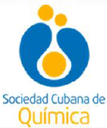Executive Secretary

VII Simposio Internacional de Química 2019
SIQ 2019
During the manufacture of medicinal products in multiproduct facilities, the chances of cross-contamination is a concern. To guarantee the safety of operators exposed to active substances, the establishment of cleaning limits is considered, which are a determining factor in the validation studies in the pharmaceutical industry. The objective of this work is to recommend a viable approach to evaluate the toxicological and pharmacological data of the active substances in the determination of the threshold levels contemplated in the GMP guidelines. The method of establishing the permitted daily exposure (PDE) was used. This involves: 1) identification of the hazard, 2) identification of critical effects, 3) determination of the level at which no adverse effects are observed (NOAEL) and 4) the use of adjustment factors according to the levels of uncertainty. For the identification of the hazards, a review of the animal and human data available for each compound should be performed as well as clinical data. Critical effects include the most sensitive indicator of an adverse effect seen in toxicity studies or clear evidence of these. For all critical effects identified, a NOAEL must be established. The establishment of professional exposure limit values is a necessary reference in decision making (monitoring of working conditions, periodic re-evaluation of exposures and implementation of corrective measures). The proposed methodology provides a useful tool in the identification of risks and allows to establish more accurately the upper limits used in validation of cleanliness of aseptic areas.
During the manufacture of medicinal products in multiproduct facilities, the chances of cross-contamination is a concern. To guarantee the safety of operators exposed to active substances, the establishment of cleaning limits is considered, which are a determining factor in the validation studies in the pharmaceutical industry. The objective of this work is to recommend a viable approach to evaluate the toxicological and pharmacological data of the active substances in the determination of the threshold levels contemplated in the GMP guidelines. The method of establishing the permitted daily exposure (PDE) was used. This involves: 1) identification of the hazard, 2) identification of critical effects, 3) determination of the level at which no adverse effects are observed (NOAEL) and 4) the use of adjustment factors according to the levels of uncertainty. For the identification of the hazards, a review of the animal and human data available for each compound should be performed as well as clinical data. Critical effects include the most sensitive indicator of an adverse effect seen in toxicity studies or clear evidence of these. For all critical effects identified, a NOAEL must be established. The establishment of professional exposure limit values is a necessary reference in decision making (monitoring of working conditions, periodic re-evaluation of exposures and implementation of corrective measures). The proposed methodology provides a useful tool in the identification of risks and allows to establish more accurately the upper limits used in validation of cleanliness of aseptic areas.
Sobre el ponente

Dr. Dania Bacardí Fernández






